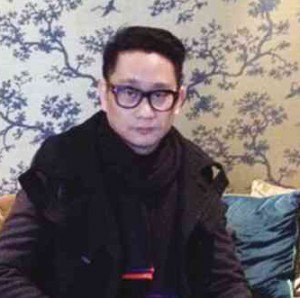
Conclusion
So what does it take to be a fashion stylist?
Noel Manapat says it pays to get some formal training, noting that local fashion schools now offer courses on the subject (he taught fashion styling in courses organized by fashion designers Lulu Tan-Gan and Inno Sotto).
But one must not limit the training to styling, he stresses. The point is to have the “basics.”
Get an internship with a magazine or a stylist, he adds. Real-life application of one’s creative ideas is a must. Manapat, who got into the trade “by accident,” didn’t benefit from the tutelage of a mentor—he was editing a magazine and styling its shoots when Bench hired him to style one of its ads. He studied communication arts and worked for an ad agency after college.
Jenni Epperson, who worked with the Linea Italia Group for seven years before becoming a stylist, says her experience in sales has been invaluable. “I think if you want to get into this job, you could learn a lot from sales,” she says. “It teaches you what to say to people, and how to say it.”
“The key to this job is love for fashion,” Manapat notes. “But you must also be instinctive, and you must have good reflexes to solve problems. Resourcefulness is important; you’re
practically pulling magic tricks, you’re stretching budgets. You must have continuous knowledge of trends.”
As the job entails dealing with clients, a good stylist must also be a people person.
“You’re like a psychologist,” he says. “This is a new profession, so there’s no exact definition. Some stylists go on to become fashion designers or creative directors.”
Manapat has several interns, a group that can grow to 80 people when he’s styling for a big show, a job that, he says, often means “half styling, half managing.” He’s used to handling such a team of varied interests and personalities: they’re delegated according to strengths, including organizational management.
Owing to his advertising background, Manapat sees every project or client as a “brand”: You stand for something, and you achieve that through your look.
Self-taught
Liz Uy, a hotel and restaurant management graduate, is also largely self-taught.
Uy rose from editorial assistant to fashion editor of Preview, getting grease on her elbows in the process, so to speak. She did her share of pullouts (fashion-speak for borrowing clothes from retailers and designers for shoots) and groveling before suppliers as she slowly built her network and portfolio.
“The biggest misconception about this job is that the work is easy,” she says. “I have so many if-you-only-know stories! There’s the stress, the pressure, the egos! Up to this day, I still get scared, no B.S.! I’m always on my toes. I’m still afraid of the creatives since in the end, they still have the final say and I’m just a supplier.”
A good stylist must know his/her client, Uy says. That means doing one’s research. The stylist’s job is to enhance the personal style of the client, she adds. It’s not enough to know the trends; one must also know how to adapt it to the client.
Uy has six assistants; choosing them was a crucial process, she says.
“One, they must be pleasant-looking because they represent me to the client when I’m not there. I don’t like anyone with a star complex. The ‘blogger look’ is also a no-no,” she adds, referring to outrageous clothes and shoes. “I’m all for individuality but it’s distracting. I tell them they can go all out when we go to events, but when we’re working, no. Becoming a celebrity can come later. I also insist on no high heels during shoots. How can I order them to move around if they’re in high heels?”
Number two, Uy adds, she needs her interns to be resourceful. “‘I don’t know’ and ‘Wala, eh’ doesn’t work for me. I want us brimming with options when we’re working.”
She also demands hard work, passion and, above all, loyalty.
“It hasn’t happened to me, but I’ve heard of interns who move on and they bad-mouth [their former bosses],” she says.
Abstract, unmeasurable
A good knowledge of both fashion history and current trends is beneficial, says Sidney Yap.
“Good taste, which is abstract, unmeasurable and debatable, is at the core of styling. These qualities, combined with hard work, patience, perseverance and passion, are needed (for one) to get into styling. Styling might come across as trivial, fun and easy work for most people, but it is a very difficult job. Not everyone is cut out to be a fashion stylist, even, say, people with impeccable tastes.”
Like Uy, Yap’s requirements for assistants and interns are stringent. He makes them write essays to gauge their personalities and tastes, and the extent of their knowledge in fashion.
Training his team is a must, says Yap.
“I also aid in their fashion education, having them do research reports on different fashion topics. I also quiz them regularly, such as having them learn names of creative directors for all global brands. I did not have a mentor, I learned to do everything on my own.”
Yap, however, took up courses in lighting, fashion merchandising and product design at Parsons School of Design in New York. He has a degree in business management from Ateneo de Manila.